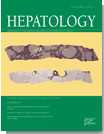Liver Transpl:美国老年丙肝患者肝移植需求增多
2013-05-06 taiji206 Liver Transpl
新的研究发现,在1941年到1960年期间出生的美国人对肝移植(因丙型病毒性肝炎相关性疾病所致)的需求量最大。美国肝脏疾病研究协会主办的《肝脏移植》(Liver Transplantation)杂志在12月这一期的研究提示,婴儿潮时期出生且由丙肝发展为肝癌的患者不断增加,这就导致肝移植的需求量继续上升。但是当这个时期出生的患者年龄继续增长时,这种需求可能减少。 在美国,丙型肝炎病毒(HCV)是最
新的研究发现,在1941年到1960年期间出生的美国人对肝移植(因丙型病毒性肝炎相关性疾病所致)的需求量最大。美国肝脏疾病研究协会主办的《肝脏移植》(Liver Transplantation)杂志在12月这一期的研究提示,婴儿潮时期出生且由丙肝发展为肝癌的患者不断增加,这就导致肝移植的需求量继续上升。但是当这个时期出生的患者年龄继续增长时,这种需求可能减少。
在美国,丙型肝炎病毒(HCV)是最常见的血源性感染,并且也是导致患者需要肝脏移植的最主要肝脏疾病。慢性丙肝患者超过美国人口的1%。以前的研究表明,10% - 20%的慢性丙肝患者将发展为肝硬化,5%的患者将发展为肝癌(肝细胞癌;HCC)。进一步研究显示,47%肝细胞癌患者的主要危险因素来是丙肝。在1979年-1989年间,美国HCV流行率达到高峰——4%,这也是HCV感染风险最高的时期,发生在1940年-1965年出生且此时年龄为20岁-30岁的人群。Davis等指出,在2000年到2030年间,因丙肝患肝硬化的人数将翻倍(从472 000增至879 000)。再者,Wise等认为,截止到2040年,HCV相关性死亡患者的年龄将会从55岁增加到64岁。
第一作者Scott Biggins博士(科罗拉多大学医学院,奥罗拉,科罗拉多州)称,对丙肝并发症可怕的预测促使我们开展针对特殊年龄组肝移植需求的研究。在目前的研究中,研究人员根据1995年到2010年通过器官获得和移植网(OPTN)注册的患者,确定了所有成人肝移植候选者。并根据是否合并HCC将患者进行分类。
结果显示,126 862名第一次在OPTN进行肝移植注册的新候选人中,41%为HCV携带者。依据出生年月对候选人进行分类,结果发现HCV感染率最高的年份依次为1951-1955、1956-1960、1946-1950和1941-1945这四个生育组出生的人,占所有新肝脏移植注册者的81%。再者,在2000年到2010年间,出生于1941-1960年间合并HCC和感染HCV的移植候选人增加了4倍。作者预计新注册者的比例将继续增加,这些注册者可能是那些年龄在60岁或以上,患有丙肝并且将可能发展为肝癌的人群。
Biggins博士的结论是,在未来十年里,丙肝患者老龄化将使肝移植界受到挑战。鉴于移植需求量的不断增加,尤其是来自丙肝和肝癌患者的需求,这就需要重新考虑当前的治疗计划。随着这一代丙肝患者群体的不断老龄化,很多患者可能因身体不够健康而不能耐受移植,丙肝患者对肝移植的需求可能逐渐减少。

DOI: 10.1002/lt.23551
PMC:
PMID:
Projected future increase in aging hepatitis C virus–infected liver transplant candidates: A potential effect of hepatocellular carcinoma
Scott W. Biggins1,*, Kiran M. Bambha1, Norah A. Terrault4, John Inadomi7, Stephen Shiboski5, Jennifer L. Dodge6, Jane Gralla2,3, Hugo R. Rosen1, John P. Roberts6
In the United States, the peak hepatitis C virus (HCV) antibody prevalence of 4% occurred in persons born in the calendar years 1940-1965. The goal of this study was to examine observed and projected age-specific trends in the demand for liver transplantation (LT) among patients with HCV-associated liver disease stratified by concurrent hepatocellular carcinoma (HCC). All new adult LT candidates registered with the Organ Procurement and Transplantation Network for LT between 1995 and 2010 were identified. Patients who had primary, secondary, or text field diagnoses of HCV with or without HCC were identified. There were 126,862 new primary registrants for LT, and 52,540 (41%) had HCV. The number of new registrants with HCV dramatically differed by the age at calendar year, and this suggested a birth cohort effect. When the candidates were stratified by birth year in 5-year intervals, the birth cohorts with the highest frequency of HCV were as follows (in decreasing order): 1951-1955, 1956-1960, 1946-1950, and 1941-1945. These 4 birth cohorts, spanning from 1941 to 1960, accounted for 81% of all new registrants with HCV. A 4-fold increase in new registrants with HCV and HCC occurred between the calendar years 2000 and 2010 in the 1941-1960 birth cohorts. By 2015, we anticipate that an increasing proportion of new registrants with HCV will have HCC and be ≥60 years old (born in or before 1955). In conclusion, the greatest demand for LT due to HCV-associated liver disease is occurring among individuals born between 1941 and 1960. This demand appears to be driven by the development of HCC in patients with HCV. During the coming decade, the projected increase in the demand for LT from an aging HCV-infected population will challenge the transplant community to reconsider current treatment paradigms.
本网站所有内容来源注明为“梅斯医学”或“MedSci原创”的文字、图片和音视频资料,版权均属于梅斯医学所有。非经授权,任何媒体、网站或个人不得转载,授权转载时须注明来源为“梅斯医学”。其它来源的文章系转载文章,或“梅斯号”自媒体发布的文章,仅系出于传递更多信息之目的,本站仅负责审核内容合规,其内容不代表本站立场,本站不负责内容的准确性和版权。如果存在侵权、或不希望被转载的媒体或个人可与我们联系,我们将立即进行删除处理。
在此留言












#TRA#
74